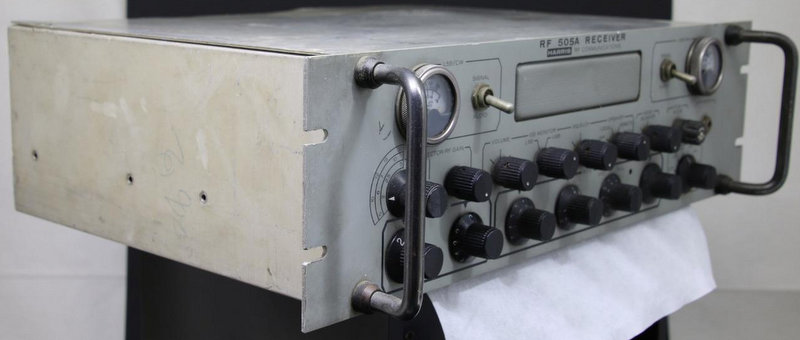In response to our post mentioning the Harris RF-505A, SWLing Post contributor, Bob LaRose (W6ACU), writes:
I know the RF-505A very well. It was introduced in about 1969 while I worked at Harris in Rochester. I started working there as a Co-Op student while at RIT and then after I got my BSEE I joined them full time, initially as a Field Engineer but quickly found my way into Marketing and eventually Sales.
Right after the first version came out, the RF-505, I took one home to my parent’s house for a weekend and did some SWLing with it. It was very neat in one respect – it tuned ISB (Independent Side Band) and in those days there were a number of utility stations using ISB (separate traffic on each sideband). To an SWL some of the most interesting of these were the VOA point-to-point links from the East and West Coast, each carrying two simultaneous program feeds for the overseas relay stations!
While overall a good receiver my personal results on the sensitivity of the original RF-505 were not very positive. On the bench with exactly a 50 ohm source it looked good but on a real world antenna it was pretty numb. Eventually, after a lot of internal arguments, they came out with the RF-505A that included a tunable active preselector as shown in the photos. Problem solved.
For a ham or SWL the RF-505 was a real pain in the butt to tune. You could dial in any exact frequency but the decade switches didn’t roll over (either mechanically or electrically) so you had to do a lot of knob twiddling to do any kind of band scanning. The detents on the switches connected to the knobs were pretty stiff so you could easily take some finger skin off tuning around!
If I remember correctly Harris built them for about a five year period and then replaced them with the RF-550, which was a monster of a receiver with all kinds of advanced features. It included a keyboard with electronic display.
Great memories!
Thanks so much for this RF-505A insight, Bob! I had a hunch that band-scanning wasn’t the RF-505A’s strong suit–it would be incredibly cumbersome to scan with so much “knob twiddling.”
It must have been pretty amazing to work for the legendary Harris corporation. Thanks for sharing!



That’s why it’s great to have swling.com around: I could not only find some insights from a former Harris engineer but also the deal breaker issue (wide filters) with this radio at the same place, when I found one offered at eBay classifieds:
https://www.ebay-kleinanzeigen.de/s-anzeige/kurzwelle-empfaenger-harris-rf-505a-auch-amateurfunk/868654110-168-707
This one is labeled as “RF Communications Inc” rather than “Harris” and I find the bundled “Active HF RX Antenna” quite intriguing – it looks a bit like it was specifically made for this radio, and I think it was at least made in the same time period. I couldn’t find anything about this tuned active loop anywhere (maybe homebrew). Anyway, I think 350EUR might be a not very realistic asking price for this thing.
Many of these ended up in Canada. I had a 505-A many years ago, like the R-1051 series it was doomed as a general coverage receiver. You have to remember the wide ssb filters used by the military worked well for them as those particular frequencies weren’t frequented by amateur operators and thus weren’t qrm’ed by close in operators. Mine was stable looked like new and was traded soon after acquiring.
That must have been such a treat, at the time. We saw these high end receivers via ads (which seemed more aimed at the professionals than at the hobbyist), and the rare article that discussed high end receivers, the tone mostly “we can’t afford these, but this may be what future receivers look like”. But rarely did we see them beyond the ads.
But we dreamed. Even now, people with receivers like this are lucky, the price has come down, but there aren’t enough to go around.
Now, we’ve seen some of that future, lots of fairly inexpensive receivers which are digitally tuned, except better implemented, digital readouts and continuous tuning, but with direct entry too. It’s not the same as experiencing such receivers before most people. Though the current receivers are better in terms of tuning, probably a mixture of technical limitations back them but also maybe lack of imagination.
Michael